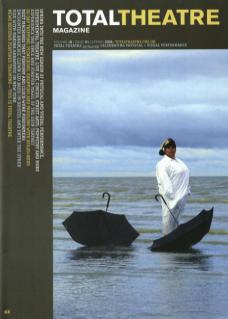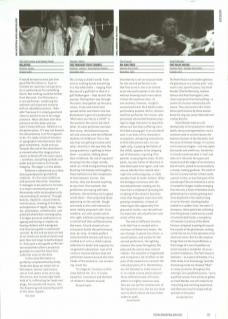Uncertainty is not an unusual state for the second performer in An Oak Tree as he or she is an invited actor who participates in the show without knowing much more about it than the audience does. At one moment, however, tonight's second performer Nick Walker looks particularly puzzled. Writer, director and first performer Tim Crouch, who previously alternated between playing his stage character (a hypnotist whose act has been suffering since he killed a young girl in an accident) and, in an echo of his character's occupation, whispering instructions to Nick (the person who, for one night only, is playing the father of the child), appears to be stepping out of character, inquiring if his partner is enjoying the show. At this point, my own frame of reference is also destroyed once again, and I am unsure whether this remark interrupts the continuing play, or adds another level of make-believe. When the dialogue continues with the second performer reading out his lines from a clipboard (praising the scripting of the show) it becomes clear that the game continues with growing complexity, instead of returning to the apparently firm ground of reality: now the performers enact the role of performer and writer of the show.
The web of different illusions in An Oak Tree is created with a minimum of theatrical means: the use of props is sparse (six chairs, a sound system, and scripts for the second performer), the lighting remains the same throughout the play and the actors wear neutral clothes. The storyline is fragmented and it requires a lot of effort on the part of the audience to connect the individual parts of it. Nonetheless, we still attempt to make sense of it, to create a story and to discern those different levels of fiction, albeit in a highly conscious way. Thus we can see the mechanisms of the hypnotist's act, but we are never sure to which extent we have fallen under its spell.

